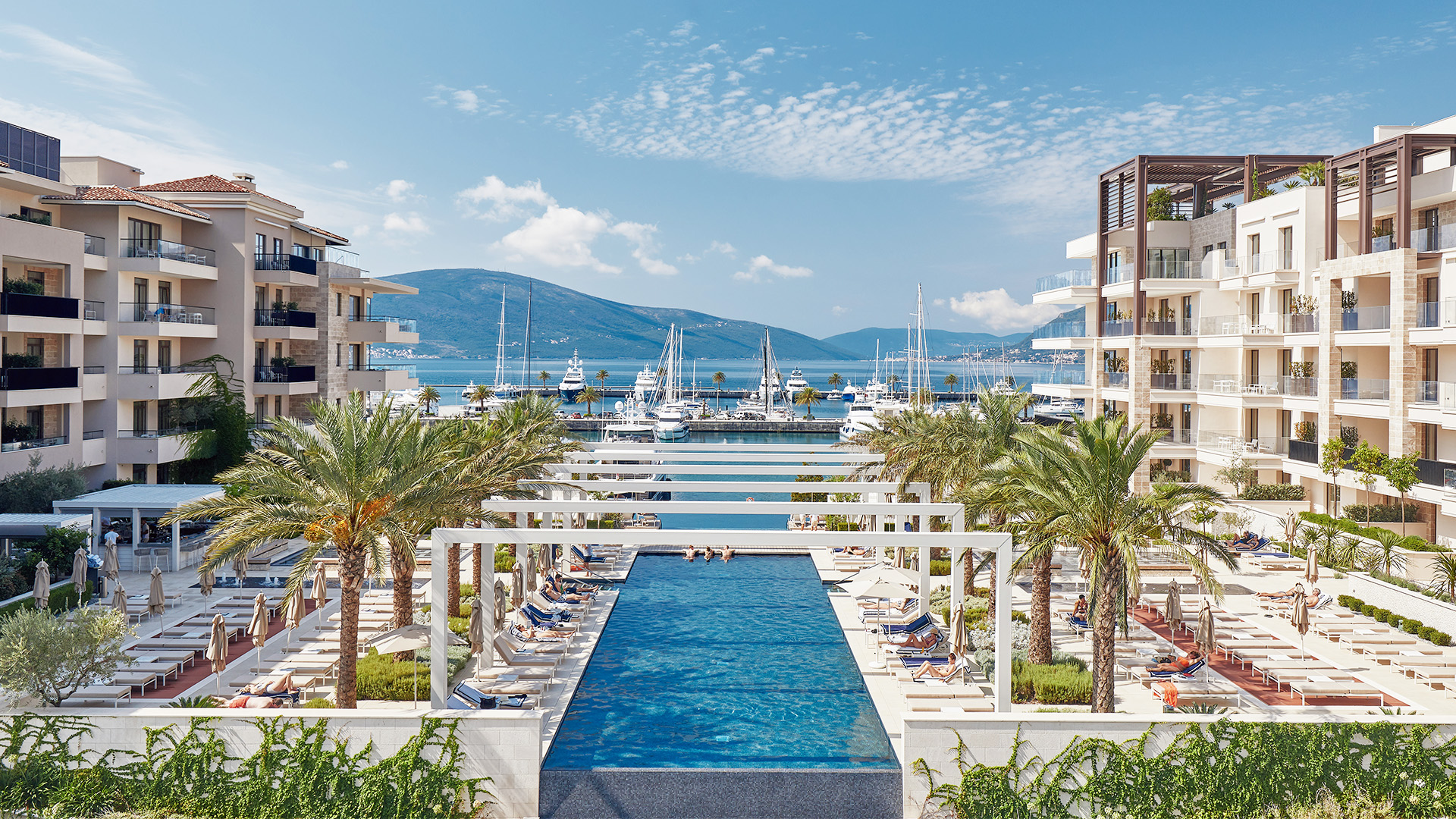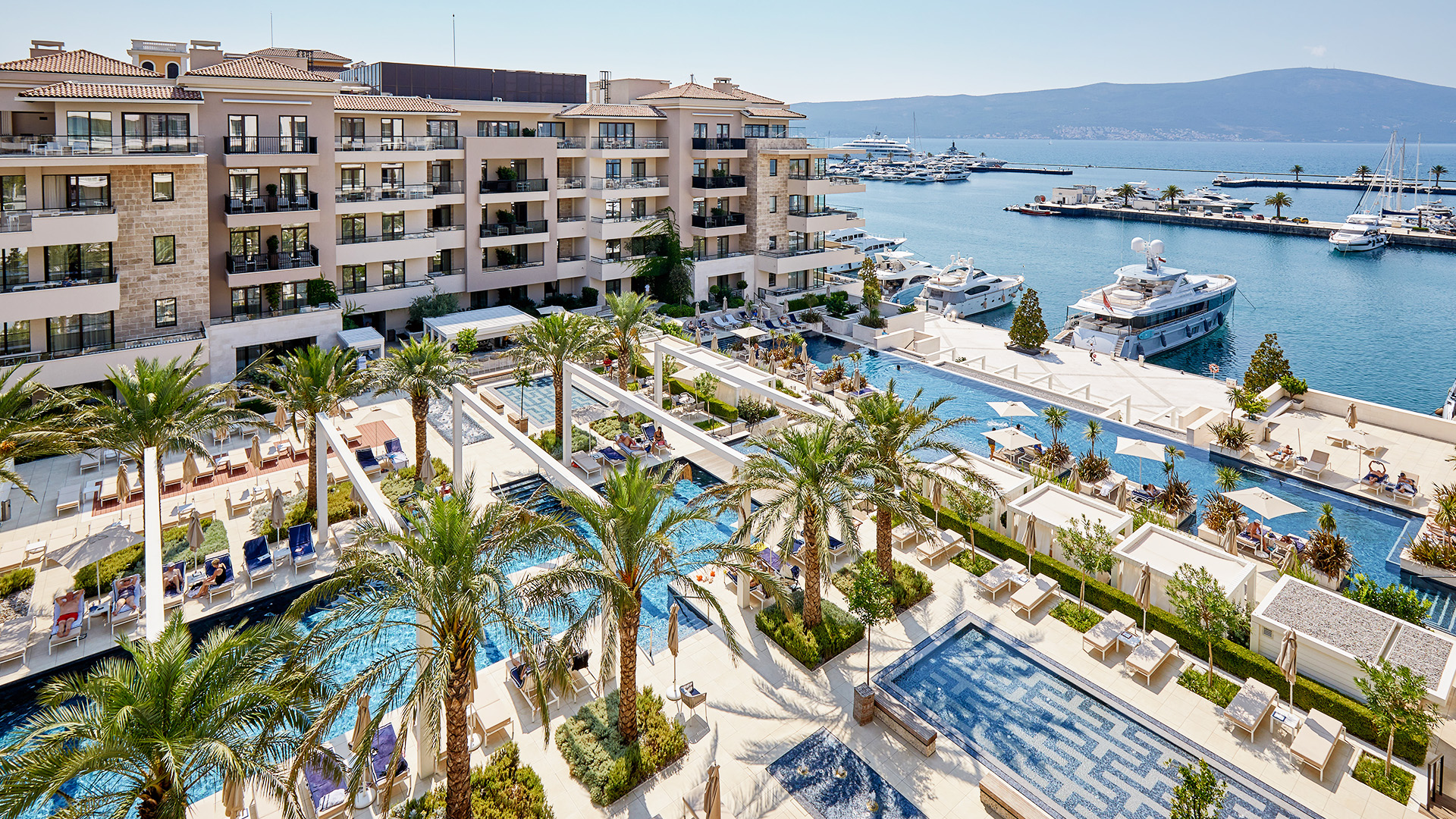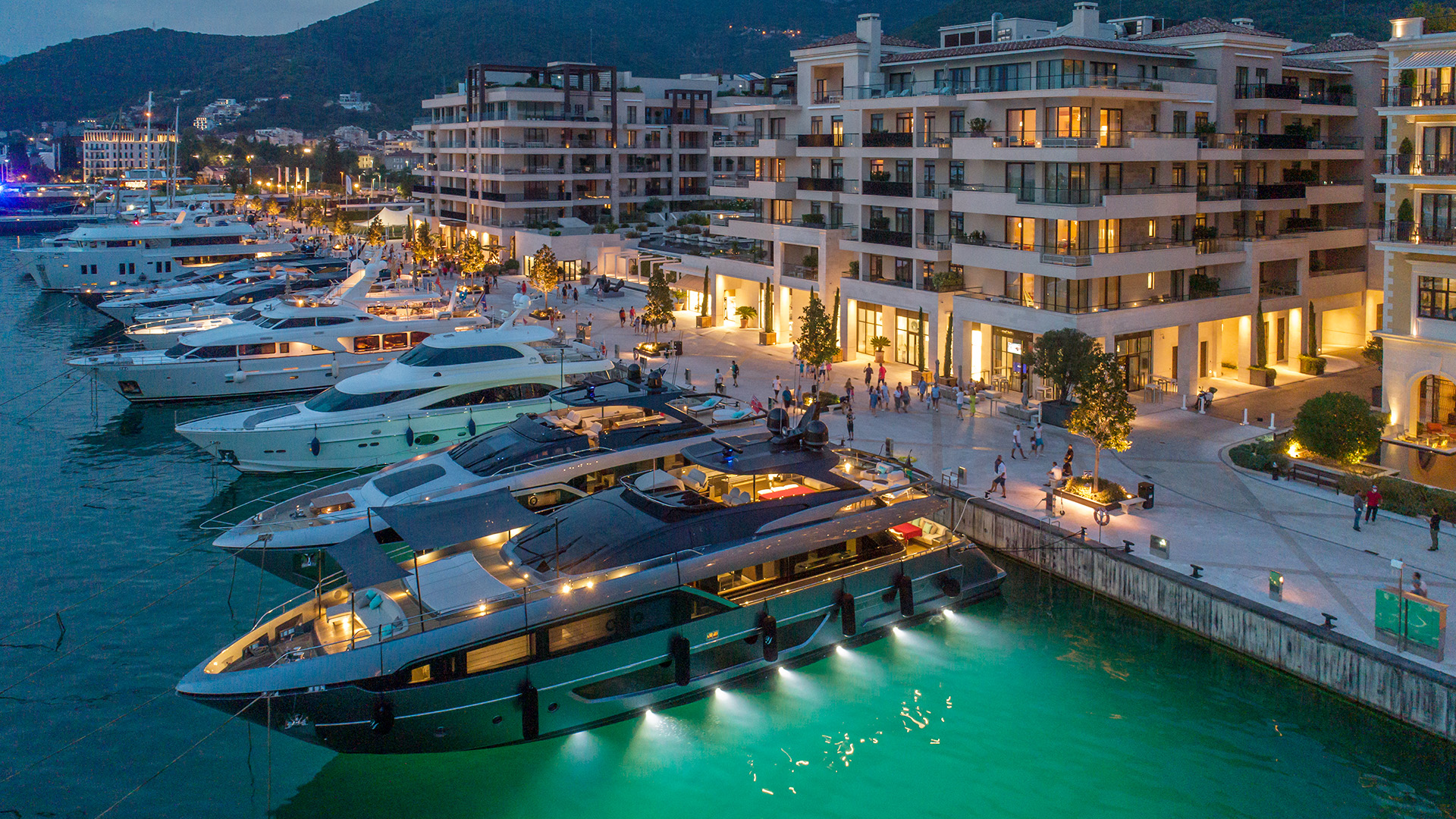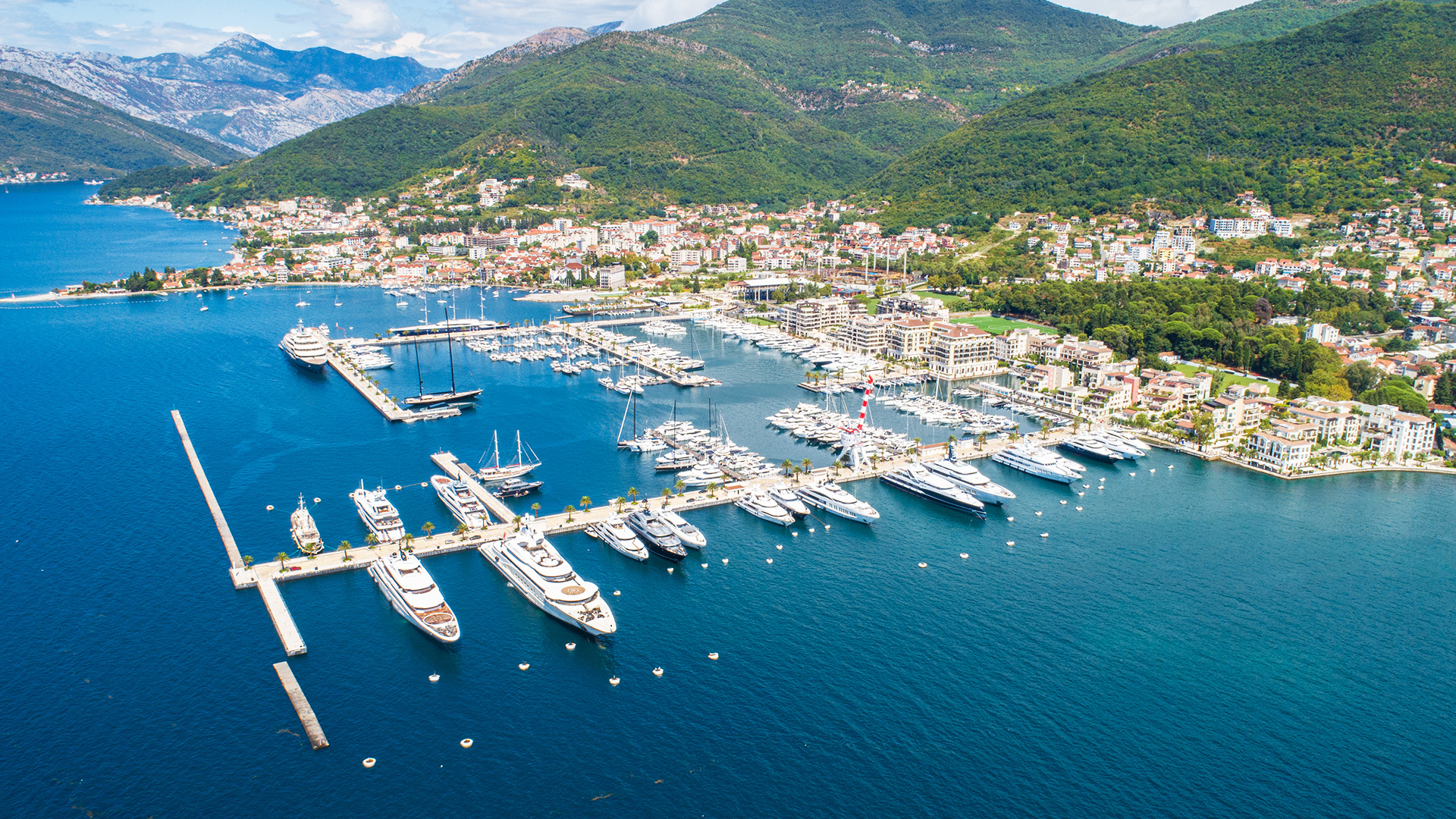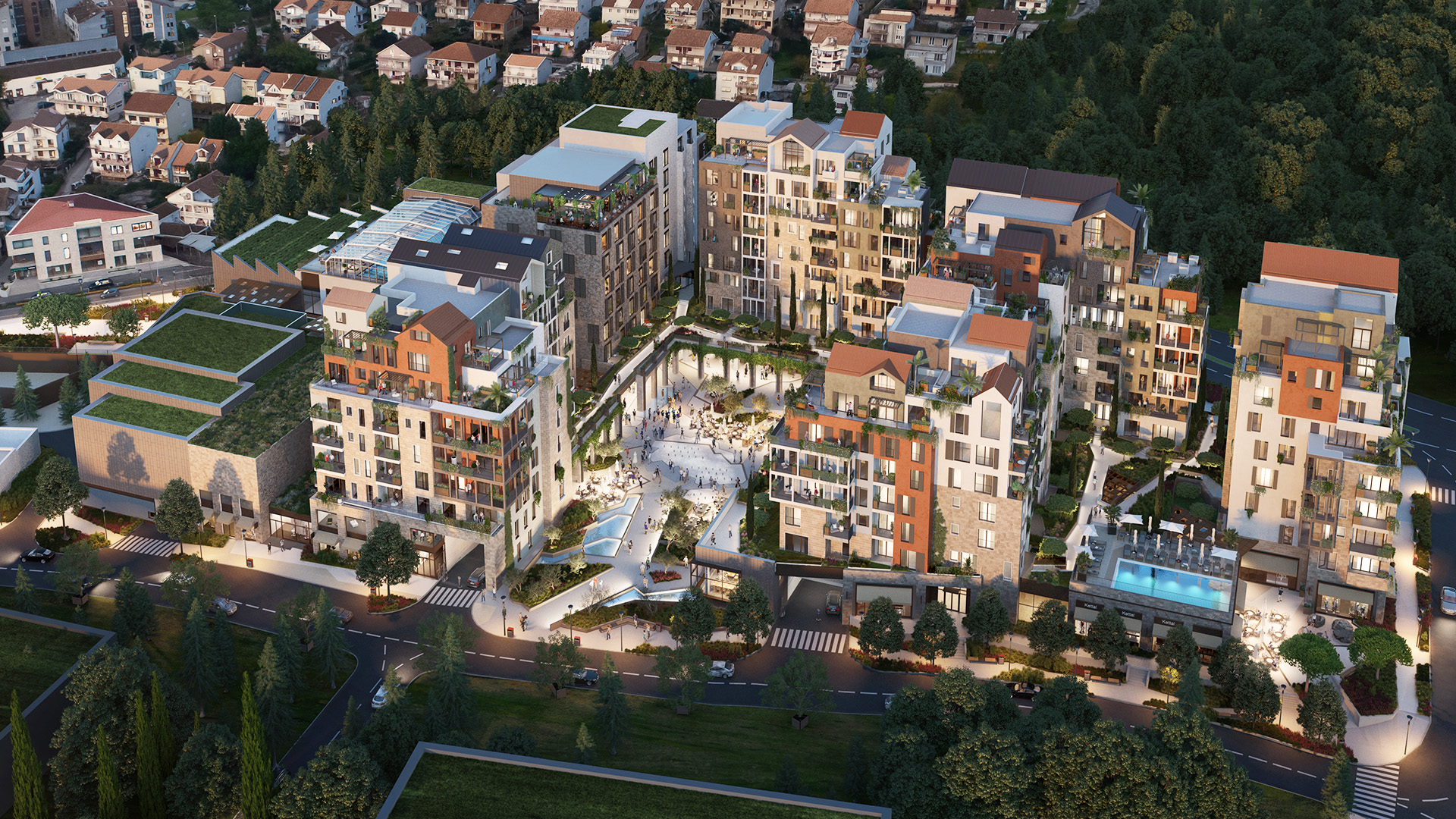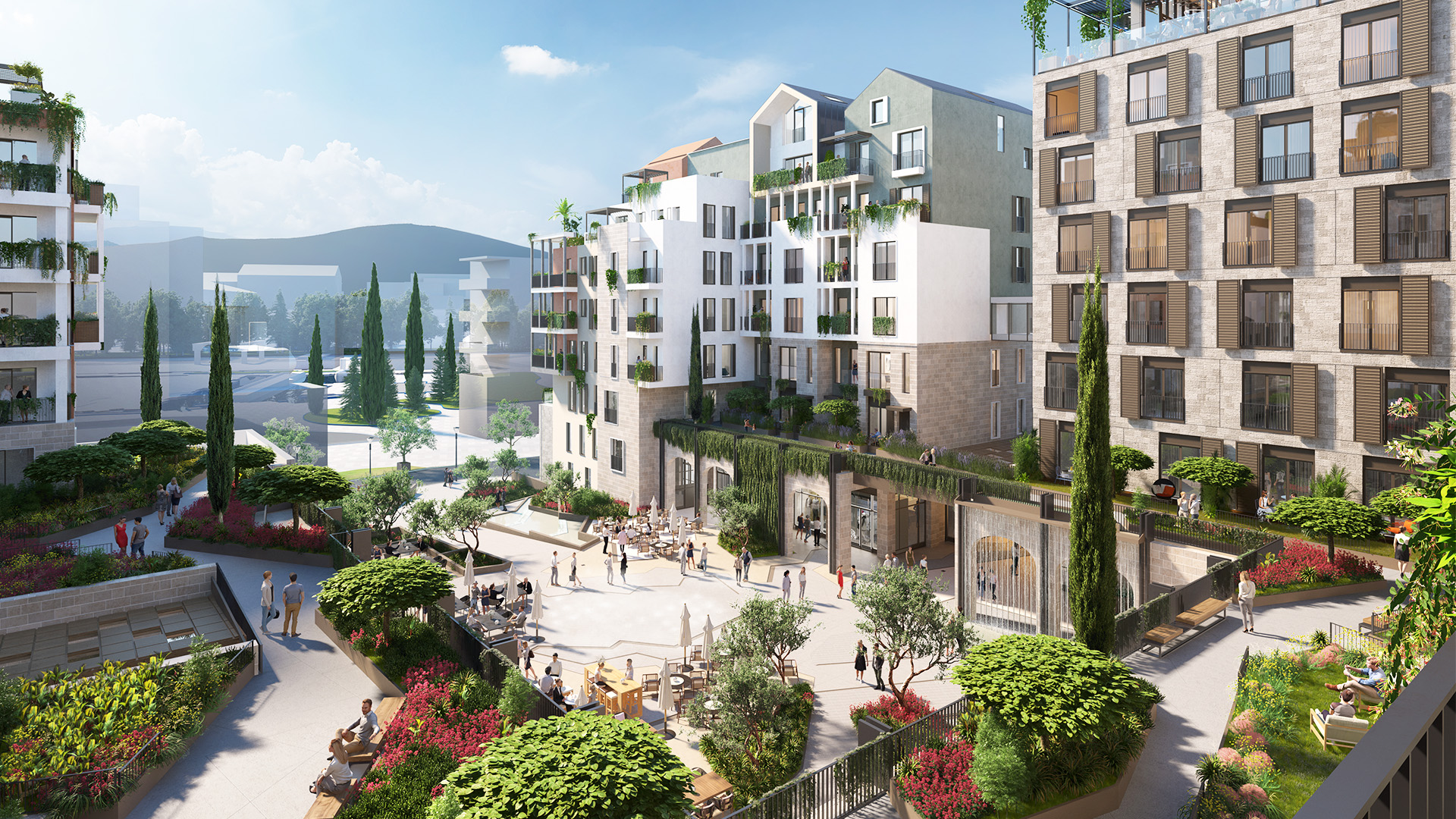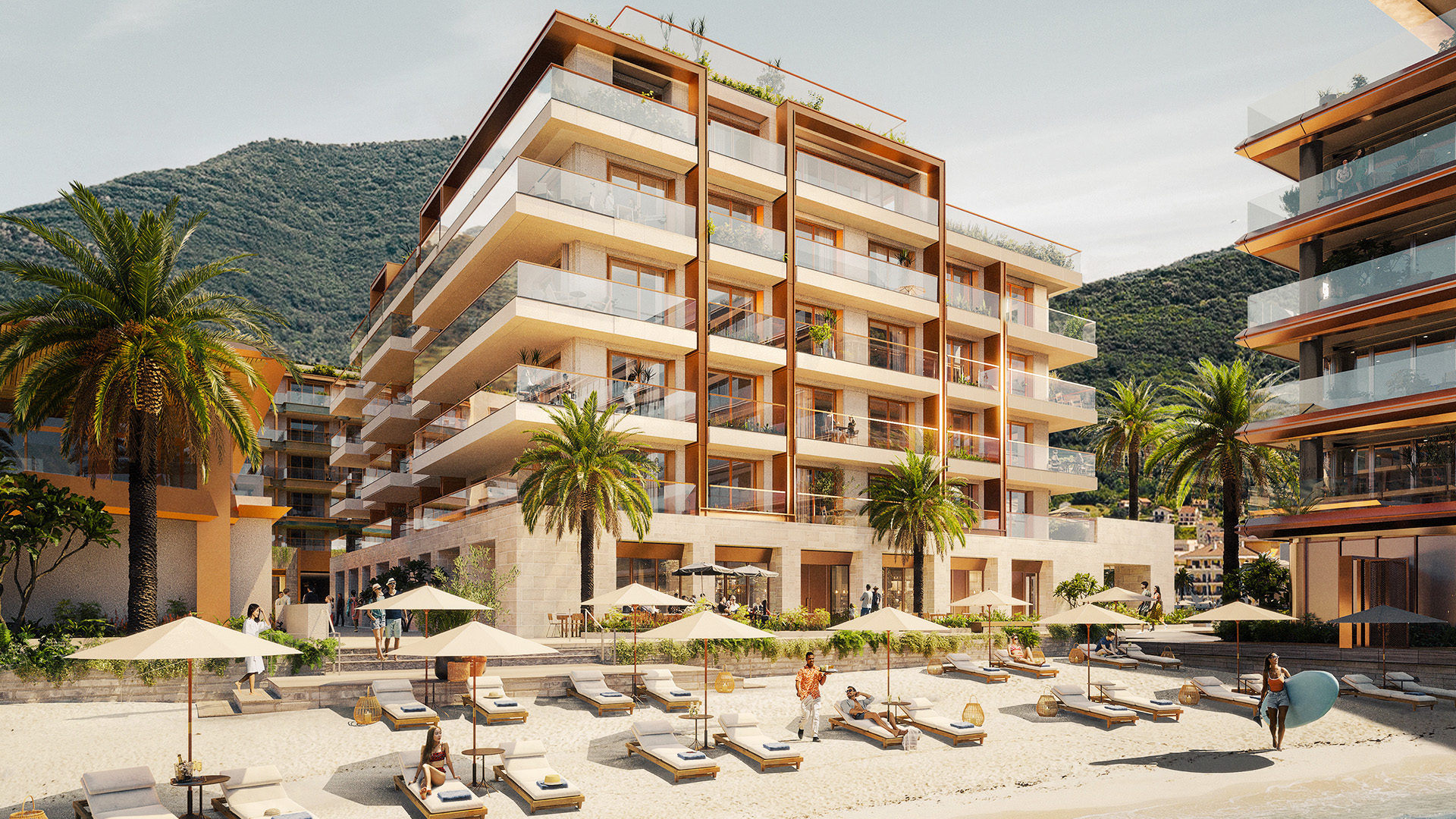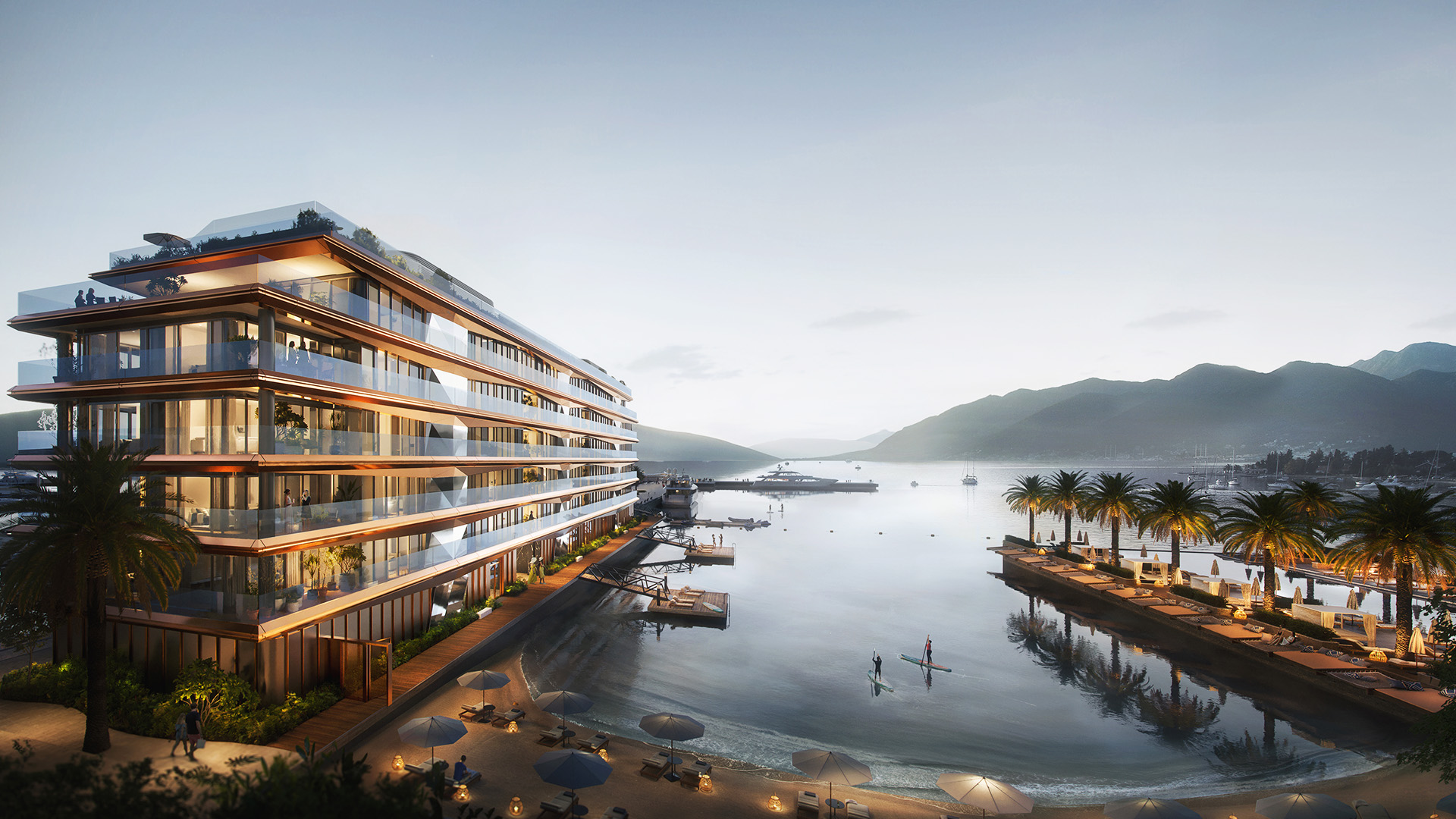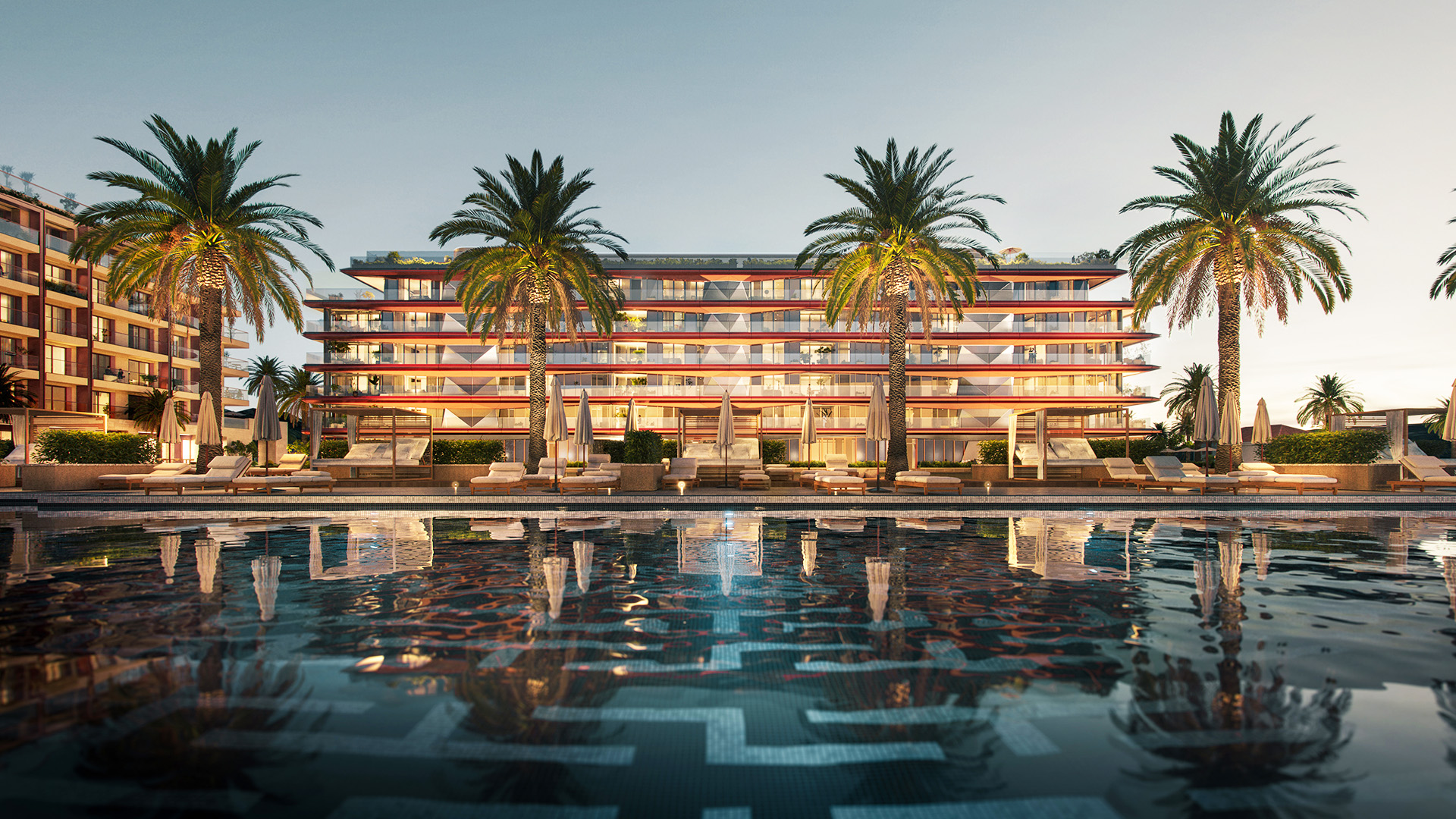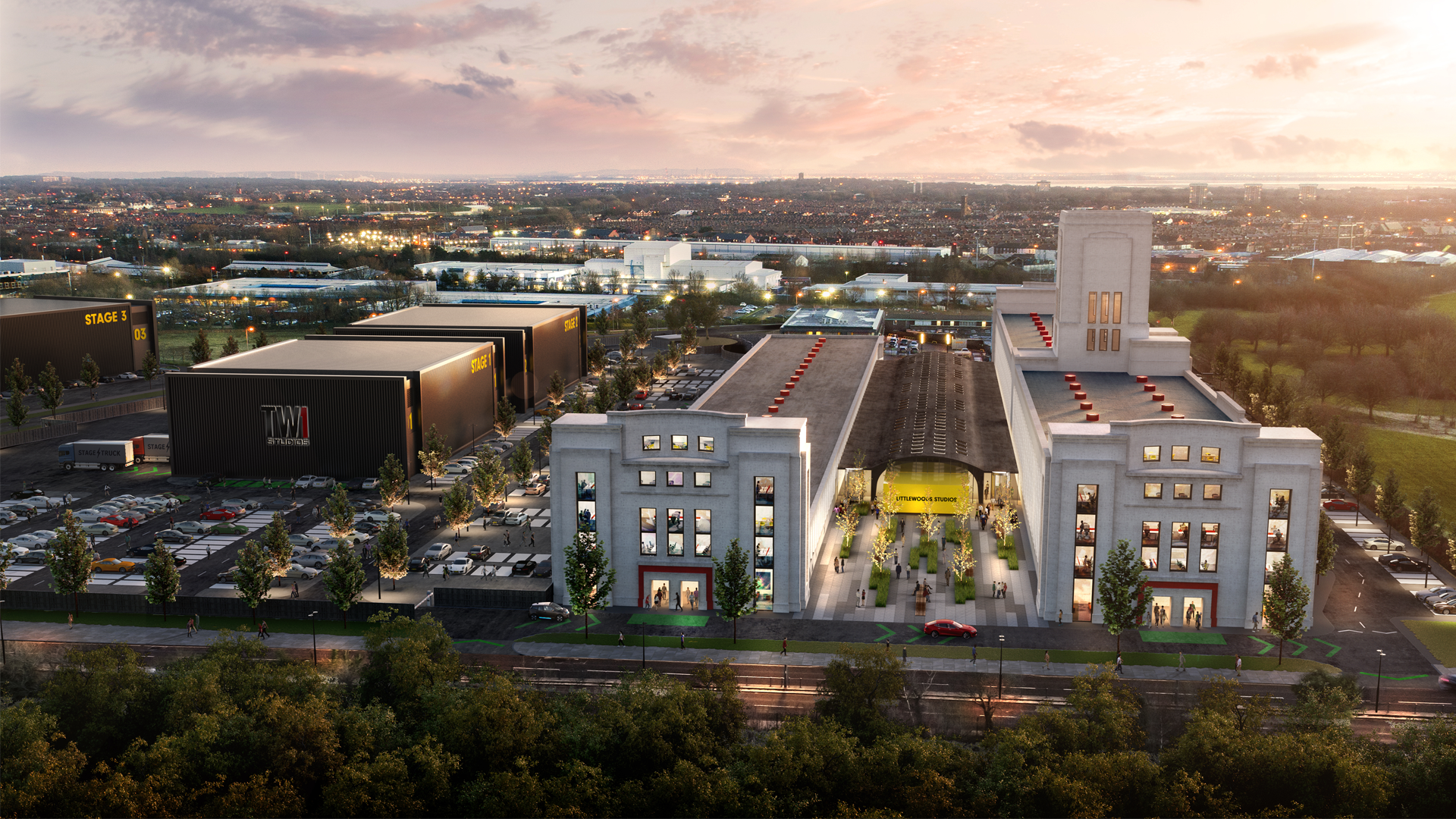
All images courtesy of Porto Montenegro
In the 1960s and 1970s, Montenegro was a magnet to the glitterati. Attracted by its stunning setting on the Adriatic and imposing mountains, film stars and aristocrats alike flocked to the place to relax and party. Then history happened.
Years of conflict and strife, not least the break-up of Yugoslavia and the wars in Bosnia and Croatia, meant that Montenegro lost its sparkle. But by 1996, the country was ready to pick itself up and start again, with semi-authoritarian president Milo Dukanovic officially severing ties with its former partner Serbia.
As an independent country once again, Montenegro needed to forge a new economic strategy and soon alighted upon the idea of reviving its reputation as a tourist destination predicated on large concessions of coastal land, not least Porto Montenegro on the Bay of Kotor.
Michael Hardman MRICS, director of property development at Porto Montenegro, says the strategy made a lot of sense. “It’s an incredibly beautiful part of the world,” he says. “Its coastline, geography and ecology, are all quite stunning. Our site sits just outside a UNESCO World Heritage site and is certainly within its sphere of influence.”
Initially, the concession was granted to a consortium led by late Hungarian-Canadian billionaire Peter Munk, the founder and chief executive of multiple ventures including real estate company Trizec Properties and Barrick Gold (the world’s biggest gold-mining corporation). “He wanted to contribute to the diversification of the Montenegrin economy,” says Hardman.
Part of the idea was to repurpose the former shipyard into a super-yacht marina. “It was going to be a bit of a playground that friends and family could come to in a beautiful part of the world,” Hardman adds. “They did some development, including a major hotel.”
In 2016, however, Munk decided to sell up in what a prominent Canadian newspaper described as the “mogul’s last big deal”, although the sale price was not disclosed. The current owner is Adriatic Marinas, a subsidiary of the Investment Corporation of Dubai (ICD), which owns, among much else, Emirates airline.
With Dubai’s crown prince, Sheikh Mohammed bin Rashid Al Maktoum, as its chairman, it can be safely assumed that Porto Montenegro has a secure future. “His excellency, our chairman, absolutely loves being here,” says Hardman. “He loves the geography of the place and is very keen to leave a positive mark on it rather than try and replicate something from Dubai, which is obviously not the right way to go here.”
Environmental and social sustainability
The development remains a destination for the wealthy, but since ICD took over the strategy has changed considerably. According to Hardman, the idea isn’t just to create employment for local people but also to knit Porto Montenegro into the very fabric of the country’s economy. According to Hardman, both environmental and social sustainability are considered at every step.
“We held the Western Balkans ESG conference here [in April] and it was very well attended,” he says. “It matters to people around here. Porto Montenegro and our neighbouring master planners are forming the nucleus of that ecosystem.
There is still a lot more to do – Hardman says that the project is about 35% developed. At present, the marina has 450 berths, more than 440 apartments have been built, alongside 80 units of ground floor retail made up of restaurants, bars, cafes and shops. Then there is the five-star Regent Hotel, which comprises more than 120 luxury suites and apartments.
The Boka Place neighbourhood will be handed over soon, according to Hardman, which includes 213 managed and private residences alongside the first SIRO, a new “fitness-infused” hotel concept with Kerzner International. Critically, the scheme also introduces a new high street.
“That will generate a new retail destination here around the bay,” he says, adding that the nearest equivalent destination is to be found in the capital city of Podgorica an hour and a half away. “It’s not an hour and a half on straight road; it’s an hour and a half over the mountains, which is a pretty tiresome journey if you do it too many times,” adds Hardman.
Next up is Synchro Yards. The latest phase of development, due to complete in 2026, includes two new luxury residential buildings, AERIS and IVO, both designed by Woods Bagot, as well as a beach club with a swimming pool and lagoons, dedicated performance and events spaces, restaurants, and high-end shops.
However, the set piece of Synchro Yards will be a renovated former shipyard building. The idea here is to embrace the area’s industrial legacy while at the same time providing a space for events and activities, from art masterclasses and fashion shows to music workshops.
In addition, Synchro Yards houses the Porto Montenegro’s Naval Museum, where visitors can explore more than 300 artefacts, including rare naval equipment and genuine Yugoslav submarines. There is also the recently launched Synchro360 Production video studio.
“We’re trying to generate business in the advertising, media and film industries,” says Hardman. “We’ve also started a foundation to sponsor young and emerging, talented musicians. We want to bring social infrastructure to our new hard infrastructure. I guess it’s a smaller scale version of what they're trying to do at Hudson Yards in New York.”
It is also hoped that recording artists and bands will visit with their families to use the facilities and have a holiday at the same time. “The idea is that you might want to come to one of the hotels and spend a week in a recording studio while your husband or wife lazes about by pool, and that you go home with more creative fulfilment than you came with.”
The concept is inspired by legendary studio AIR’s facility on Montserrat, a tiny British Overseas Territory in the eastern Caribbean. In 1977, Beatles manager George Martin was enamoured with the island and decided to build a recording studio in paradise. Opened in 1979, AIR Studios Montserrat offered the technical facilities of its London counterpart in a Caribbean climate.
More than 70 albums were recorded there in 10 years, including Dire Straits’ Brothers In Arms, Elton John’s Too Low for Zero and Steel Wheels by the Rolling Stones. Hurricane Hugo destroyed the studio in 1989, prompting Martin to close the business. “Some of our ideas were predicated on that,” says Hardman.
Hosting major events
Whether or not Porto Montenegro succeeds in replicating AIR’s success is, of course, unknown. But the development has already established a strong programme of events designed for locals, residents and tourists, all with the aim of animating the space and opening up the site. Last month, for instance, the port played host to the Made In New York Jazz Festival, which featured a lineup of legendary global artists.
The summer will also see wine events, a visit from the Berlin Philharmonic, the International Fashion Festival, Polo in the Port and a food festival. “Rather than just building something, it’s about asking: what can we do now?” says Hardman.
So, there is no doubt that Porto Montenegro is a luxury development in keeping with its glamorous past: the marketing materials proclaim it so and the prices for the residential units range from sharp intake of breath inducing to eye watering. A polo event is also something of a giveaway.
At the same time, Hardman and his team are working hard to ensure that the development benefits the wider community and Montenegro as a whole. “Historically, if you were trying to map Montenegro onto London, we wouldn’t quite be Belgravia but we would be Mayfair,” he says.
“But this is now the most prosperous municipality in the country because of what we've done and the multiplier effect. It's not about creating some gated community; it's about having a social and physical infrastructure impact on the whole region.”


